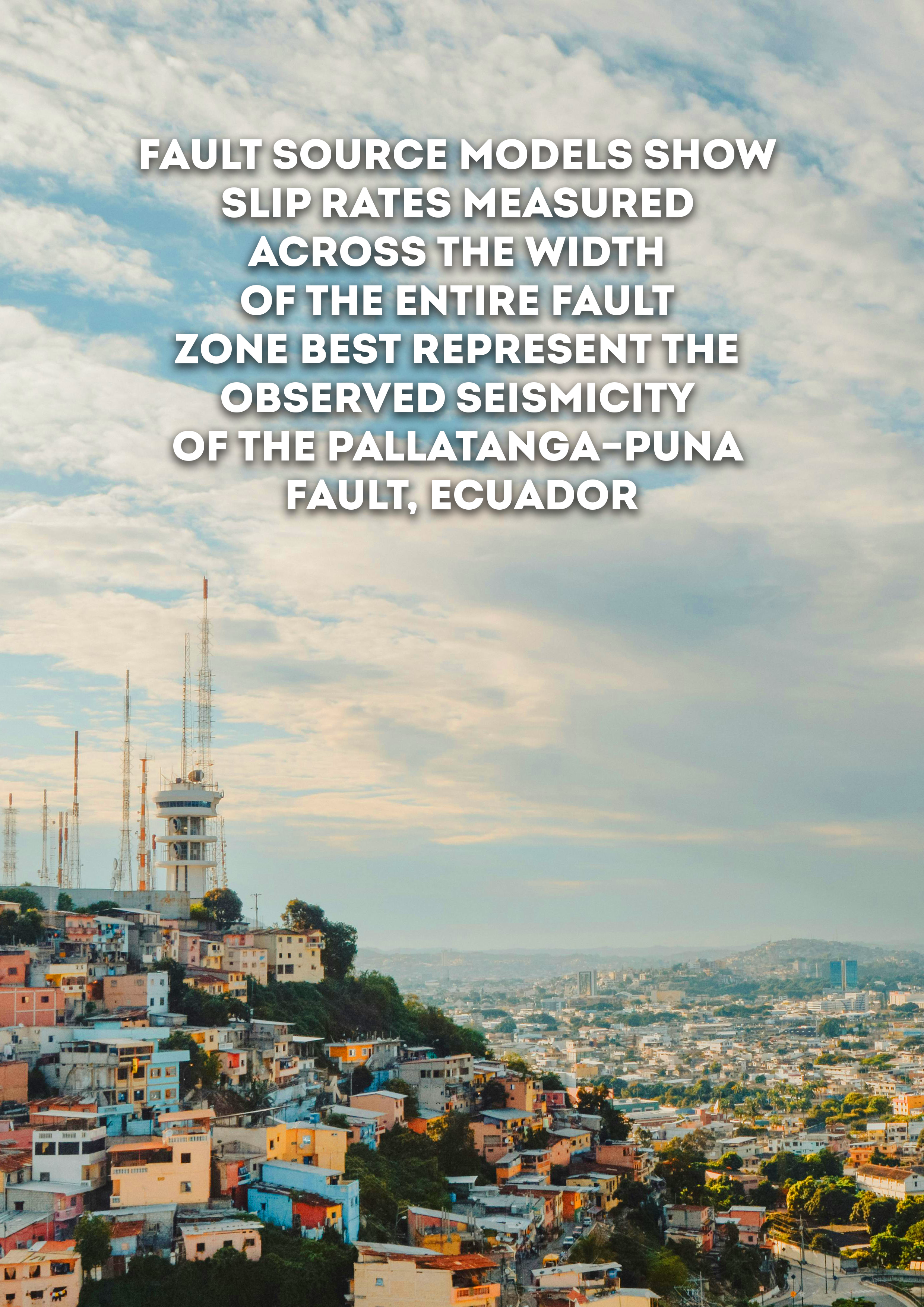top of page
Fault Source Models Show Slip Rates Measured across the Width of the Entire Fault Zone Best Represent the Observed Seismicity of the Pallatanga–Puna Fault, Ecuador
2024
|
Peer-reviewed
We explore how variation of slip rates in fault source models affect computed earthquake rates of the Pallatanga–Puna fault system in Ecuador. Determining which slip rates best represent fault‐zone seismicity is vital for use in probabilistic seismic hazard assessment (PSHA). However, given the variable spatial and temporal scales slip rates are measured over, significantly different rates can be observed along the same fault. The Pallatanga–Puna fault in southern Ecuador exemplifies a fault where different slip rates have been measured using methods spanning different spatial and temporal scales, and in which historical data and paleoseismic studies provide a record of large earthquakes over a relatively long time span. We use fault source models to calculate earthquake rates using different slip rates and geometries for the Pallatanga–Puna fault, and compare the computed magnitude–frequency distributions (MFDs) to earthquake catalog MFDs from the fault zone. We show that slip rates measured across the entire width of the fault zone, either based on geodesy or long‐term geomorphic offsets, produce computed MFDs that compare more favorably with the catalog data. Moreover, we show that the computed MFDs fit the earthquake catalog data best when they follow a hybrid‐characteristic MFD shape. These results support hypotheses that slip rates derived from a single fault strand of a fault system do not represent seismicity produced by the entire fault zone.
bottom of page








